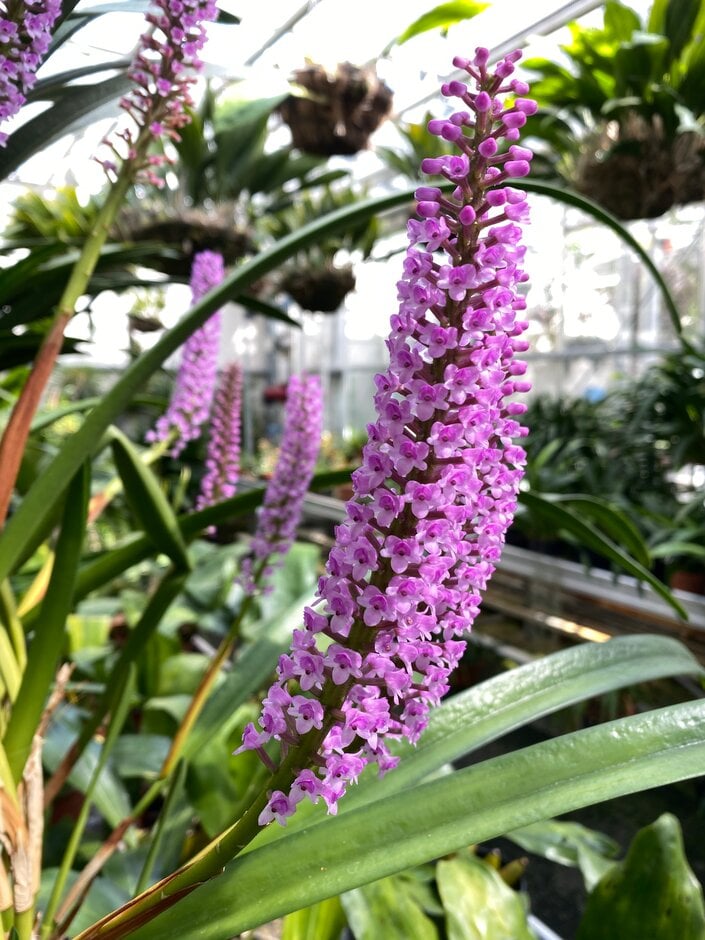Arpophyllum giganteum 'Wisley'
arpophyllum 'Wisley'
A medium to large-sized, epiphytic orchid with upright, up to 75cm tall pseudobulbs. Each pseudobulb carries a single, strap-shaped, dark green, leathery leaf up to 60cm long and 3-4cm wide. The orchid flowers in late spring with upright, dense raceme up to 40cm tall, carrying a large number of small, spirally arranged flowers. Upside-down flowers measuring 0.8cm are pink-purple with darker lip.

Size
Ultimate height
0.5–1 metresTime to ultimate height
5–10 yearsUltimate spread
0.5–1 metresGrowing conditions
Moisture
Well–drained, Moist but well–drainedpH
NeutralColour & scent
| Stem | Flower | Foliage | Fruit | |
| Spring | Pink | Green | ||
|---|---|---|---|---|
| Summer | Green | |||
| Autumn | Green | |||
| Winter | Green |
Position
- Full sun
- Partial shade
Aspect
East–facing or North–facing or South–facing or West–facing
Exposure
Sheltered Hardiness
H1ABotanical details
- Family
- Orchidaceae
- Native to GB / Ireland
- No
- Foliage
- Evergreen
- Habit
- Clump forming, Tufted
- Genus
A genus of 3 flowering epiphytic or terrestrial orchids, found mainly in Mexico, with short, slender stems and one sickle-shaped, fleshy green leaf. Upright, dense racemes of purple flowers appear from winter through to spring
- Name status
Unresolved
How to grow
Cultivation
Grow in an open, bark-based orchid compost with addition of perlite and sphagnum moss from sustainable sources. Provide enough bright filtered light, but keep away from direct sunlight or a heating source. May be grown in intermediate to warm conditions with temperatures between 12-30 °C. Seasonal and daily fluctuations of temperatures encourage flowering. Average humidity of 50-70% is sufficient and watering should be frequent enough during growing season (approximately once per week), with being reduced by half during winter months. Large specimens produce best flowering, however it is desirable to repot plants every few years to avoid stale, disintegrated potting mix.
Propagation
Propagation by seed is only possible in a controlled laboratory environment. Mature plants may be divided when the plant overgrows its container. Each division should have at least 3 older growths with a sufficient amount of stored energy and water, to support new growth and reduce stress after repotting.
Suggested planting locations and garden types
- Houseplants
- Conservatory and greenhouse
Pruning
No pruning required
Pests
Generally pest-free, but may be susceptible to scale insects or mealybugs.
Diseases
Generally disease-free. Poor air movement may cause bacterial or fungal rots. Good hygiene practice and sterilising cutting tools prevent the spread of virus diseases.
Get involved
The RHS is the UK’s gardening charity, helping people and plants to grow - nurturing a healthier, happier world, one person and one plant at a time.